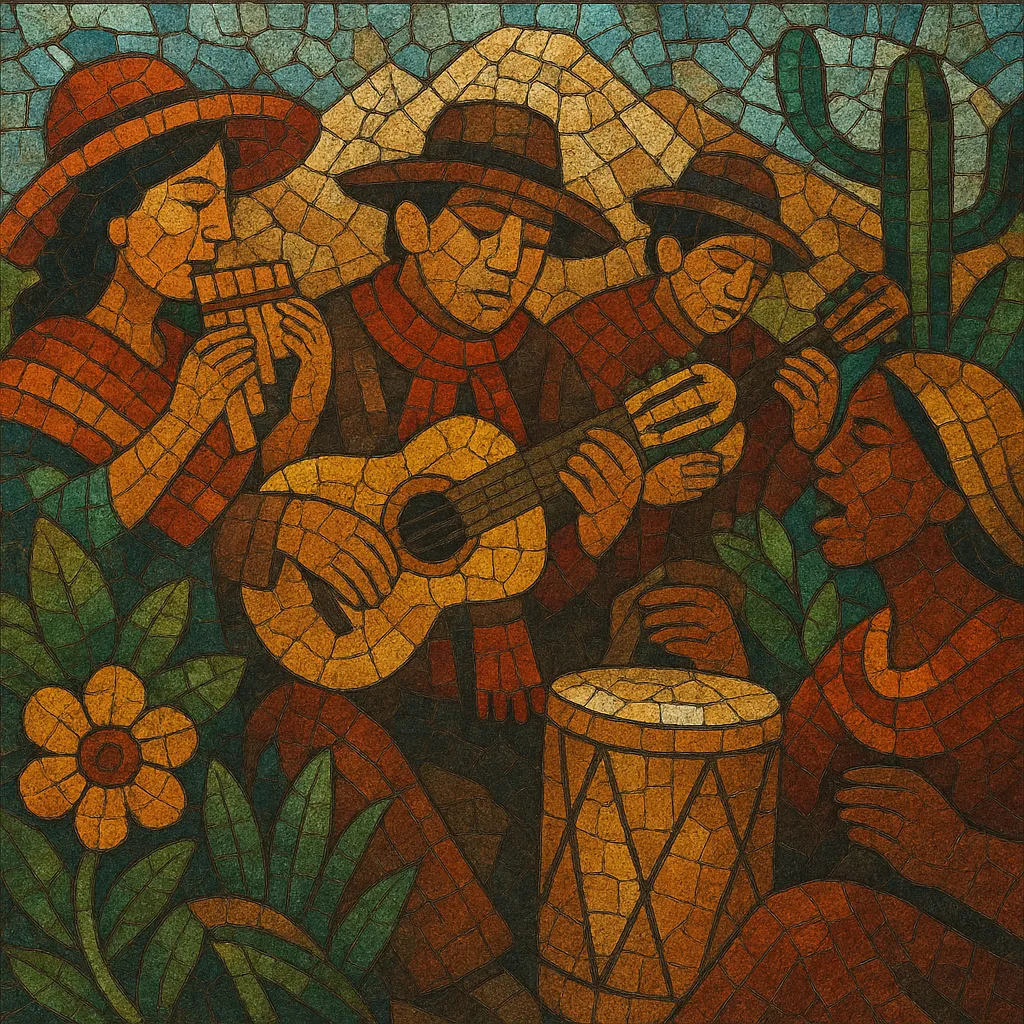Latin folklore is an umbrella term for the traditional, roots-based musical practices of Latin America, spanning the Andes, the Southern Cone, Mesoamerica, the Caribbean rim, and parts of Brazil. It draws on Indigenous, Iberian (Spanish and Portuguese), and West/Central African lineages, and is expressed through local song forms, dances, and ritual contexts.
Common sonic markers include acoustic string instruments (guitar, charango, cuatro), harps, flutes (quena, panpipes), hand and frame drums (bombo legüero, cajón), and call-and-response vocals. Rhythmic cells often favor 6/8–3/4 hemiolas, Afro-diasporic syncopation, and pentatonic or modal melodies tied to regional scales and tunings. While highly localized—e.g., chacarera and zamba (Argentina), cueca and tonada (Chile), huayno (Peru/Bolivia), joropo (Venezuela), sones (Mexico)—the repertoire as a whole is unified by narrative lyrics about land, migration, community memory, festivity, and social struggle.
As a modern recording-category, “Latin folklore” crystallized during mid-20th‑century folk revivals and national folkloric movements, which documented, staged, and popularized rural and Indigenous traditions for urban audiences and international circuits.
Indigenous peoples across the Americas cultivated complex musical practices—ceremonial chant, flutes and panpipes, frame and slit drums—encoded with cosmology and social order. From the 16th century onward, Iberian colonization introduced European song forms (romances, coplas, décimas), string instruments (vihuela/guitar, harp), and Catholic liturgy. The Atlantic slave trade brought West and Central African rhythms, call‑and‑response, polyrhythms, and percussion, which blended with Indigenous and Iberian elements across plantations, ports, and highland routes.
Nation‑building and folklorist scholarship encouraged the collection and staging of rural traditions. Radio, records, and festivals helped standardize regional styles into recognizable genres—huayno, cueca, zamba, chacarera, sones, joropo—often arranged for urban audiences without severing ties to local dance and ritual. By the 1950s–60s, conservatories, state ensembles, and community peñas (folk clubs) amplified transmission.
Artists adapted folk idioms to contemporary poetry and political commitment, forging Nueva Canción Latinoamericana. Traditional instruments and rhythms underpinned songs about labor, Indigenous rights, exile, and democracy, carrying Latin folklore into global circuits while preserving local aesthetics.
World-music markets, archives, and festivals expanded access, while regional scenes diversified approaches—from historically informed performance to experimental crossovers (folktronica, rock en español, neofolklore). Community transmission (family ensembles, dance troupes, ritual calendars) remains central, even as educational programs, luthiers, and digital platforms sustain instrument-making, repertoire exchange, and language preservation.


